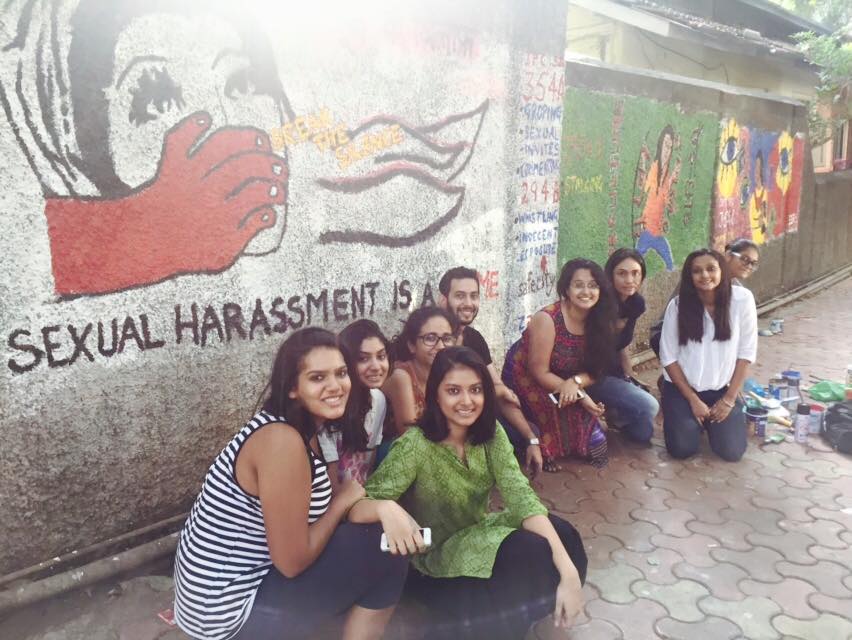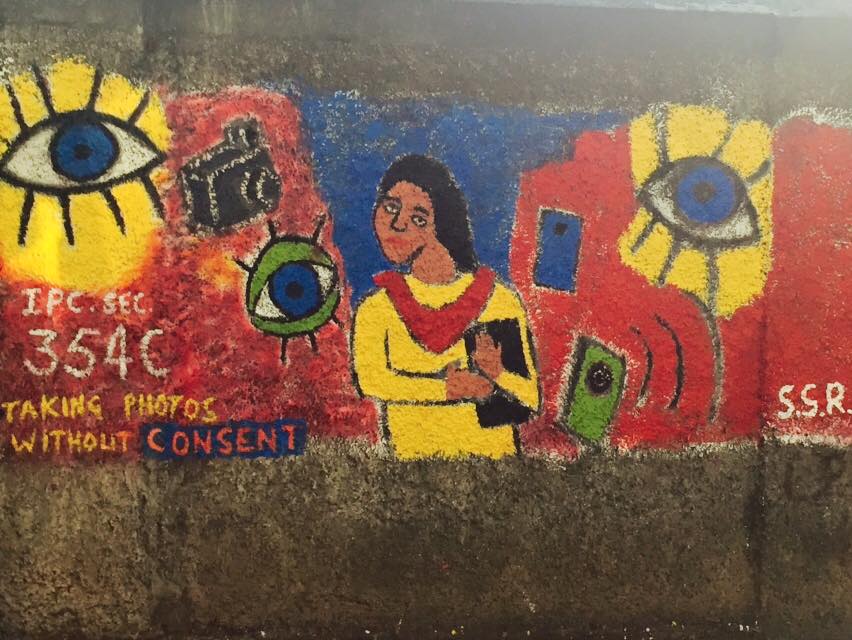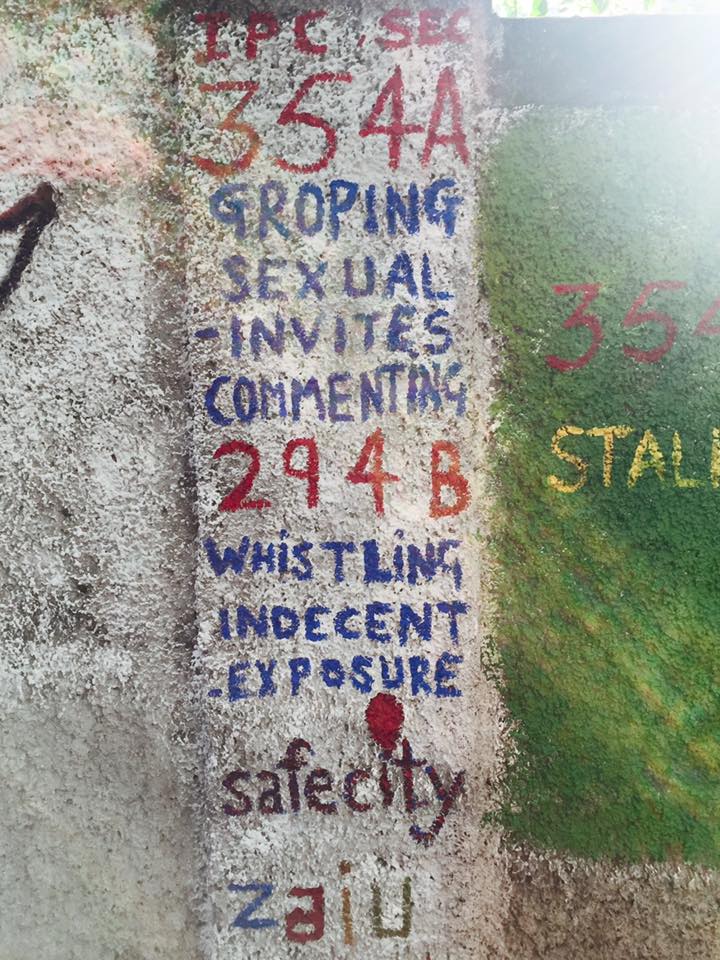Safecity and students in Mumbai painted the #TalkingWall along Peddar Road, outside Sophia College.
Archives for December 2015
#16Days of Activism: Raising Awareness on Campuses (Day 12)
Nov. 25 – Dec. 10 are the 16 Days of Activism Against Gender-Based Violence. To commemorate the week, we are featuring 1 activism idea per day. This information is excerpted from my new book Stop Global Street Harassment: Growing Activism Around the World (Praeger 2015).
A growing number of colleges and universities from Egypt to the United States have been addressing street harassment, often during Sexual Assault Awareness Month or in conjunction with International Women’s Day or International Anti-Street Harassment Week. They host workshops and street demonstrations, write sidewalk chalk messages, distribute materials, screen documentaries like the 1998 film War Zone, and create their own videos.
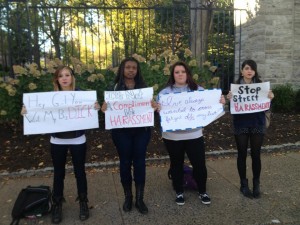 In 2012, members of Pennsylvania State University’s Triota, the women’s studies honor society, held an anti-street harassment demonstration on a busy Friday afternoon in October in downtown State College, Pennsylvania. They held signs proclaiming their anti-harassment message and even included specific remarks that had been yelled at them during their time at Penn State like “Hey girl, you want my big dick?” and “I’ve always wanted to cross a fat girl off my list.” They also held up anti-street harassment messages like “It’s not a compliment; it’s harassment.” Julie Mastrine, one of the organizers, wrote about it for the SSH blog:
In 2012, members of Pennsylvania State University’s Triota, the women’s studies honor society, held an anti-street harassment demonstration on a busy Friday afternoon in October in downtown State College, Pennsylvania. They held signs proclaiming their anti-harassment message and even included specific remarks that had been yelled at them during their time at Penn State like “Hey girl, you want my big dick?” and “I’ve always wanted to cross a fat girl off my list.” They also held up anti-street harassment messages like “It’s not a compliment; it’s harassment.” Julie Mastrine, one of the organizers, wrote about it for the SSH blog:
Don’t be mistaken: these types of incidents aren’t rare in this town. Street harassment is a widespread problem in State College, where nearly every woman I know has experienced some form of it: catcalls, taunting, lewd remarks, leering, sexually objectifying remarks, you name it. And this type of harassment functions as part of a larger issue in this town: rape culture. We saw a lot of stares and furrowed brows from passersby. Only a few people approached us to express their support, but it doesn’t matter—getting this issue in the eyes and ears of the State College community is important if we want to combat harmful behavior and attitudes toward women.
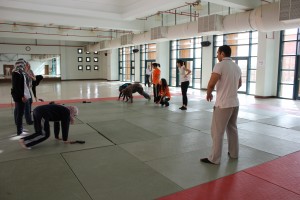 In Egypt, college student Holly Dagres created the Fight Harassment 101 (FH101) workshop in 2012 to educate female students about harassment and the use of self-defense. For 10 weeks at the American University of Cairo, 15 students took part in FH101 for two hours a week. Dagres wrote for the SSH blog about how the workshop entailed sharing information and stories about street harassment and then practicing self-defense for 90 minutes. She wrote: “It gave them a sense of empowerment to defend themselves in the worst-case scenarios. At first they were shy about sharing their experiences, but once they found it was a common occurrence and learned that it was not their fault, they felt the need to fight against it
In Egypt, college student Holly Dagres created the Fight Harassment 101 (FH101) workshop in 2012 to educate female students about harassment and the use of self-defense. For 10 weeks at the American University of Cairo, 15 students took part in FH101 for two hours a week. Dagres wrote for the SSH blog about how the workshop entailed sharing information and stories about street harassment and then practicing self-defense for 90 minutes. She wrote: “It gave them a sense of empowerment to defend themselves in the worst-case scenarios. At first they were shy about sharing their experiences, but once they found it was a common occurrence and learned that it was not their fault, they felt the need to fight against it
Help fund our work in 2016, donate to our end-of-year giving campaign!
Italy: Street Harassment and Gender Stereotypes
Sara Rigon, Italy, SSH Blog Correspondent
You are walking down the street and a man screams at you “hey, you are beautiful, babe”. You ignore him and keep walking. A million thoughts cross your mind: “Oh no, not again”, “Should I thank him so he doesn’t get mad”, “Does he look hostile?”, “Should I cross or walk faster?” etc.
The bottom line is you just want it to be over and with no consequences, so you rarely ask yourself why. It has happened so many times and it will happen again: it feels so pointless to wonder why.
Nonetheless, if we want to put an end to this we should learn from the best and follow Sun Tzu’s art of war rule: know your enemy. So, where does street harassment and violence against women come from? Where does it all start?

Social norms often view violence against women as a private matter and street harassment as women’s responsibility. Basically it is your fault: the way you walk, the clothes you wear, the way you look or don’t look, you are causing the problem: it is you. But it is not, it is a matter of gender and power. As the United Nation Declaration on the Elimination of Violence against Women, adopted by the General Assembly on 20 December 1993, states “[violence against women] is a manifestation of historically unequal power relations between men and women, which have led to domination over and discrimination against women by men and to the prevention of the full advancement of women, and that violence against women is one of the crucial social mechanisms by which women are forced into a subordinate position compared with men”.
In other words gender violence is a matter of gender equality and street harassment is the daily proof that despite of what some people think in 2015 men and women are not equal, not even in the civil and democratic western world. This is when I get the feeling life is like monopoly: we got the “go back 3 spaces” card. Back to gender equality and the question remains: how do you fight historically unequal power? I say we start from stereotypes and prehistoric clichés.
They say stereotypes are not a bad thing, on the contrary they can save your life as they help you categorize the world and quickly make sense of the mass of data that compose your day which will take forever to interpret if taken individually. However I’m not so sure this is always the case as nothing is entirely good (or bad, of course). Clichés and stereotypes about women, for example, are not necessary true and they definitely don’t simplify your life, especially if you belong to that group of people who is believed to be superficial but caring and maternal, good listener and compassionate but also gossipy and bitchy, ornamental and absolutely not good at STEM.
You may have heard of the term STEM, it seems like everyone is talking about it, creating hashtag and launching campaign to increase the number of students in such an innovating field. For those who are not familiar with it, STEM (previously SMET) is an acronym that refers to the academic disciplines of science, technology, engineering and mathematics.
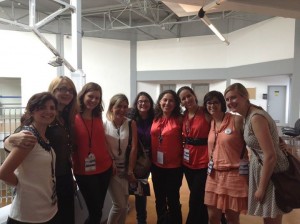
I have never really thought about it, but with all this talking about STEM and the lack of women in STEM education I started reflecting on my relationship with math and science. Did an old and narrow-minded stereotype put me off STEM? That’s not possible, I love science, I am a doctor, after all, and I have plenty of women colleagues. As a recent bmj career article reports that back in 2009 the Royal College of Physicians predicted that by 2017 most doctors would be women. I thought we were doing well, however I was forgetting that medicine is not strictly considered science, but more of an art and doctors artist armed with basic scientific knowledge in medicine.
STEM is more about hard science and so my studying to become a physician doesn’t really count. To be totally honest, I’ve always thought I wasn’t good at math and I’ve never contemplated the idea of pursuing a career in engineering. Now that I think about it, even with good grades in math I’m not so sure I would have enrolled in a STEM program at Uni knowing what the boys in my class thought and said about girls who majored in engineering and mathematics.
Reading the recent L’Oréal Foundation international report on the perception of women in science I can say it is not just me, conscious and unconscious bias and cliché on women in STEM are real and they discourage girls from undertaking a scientific education and ultimately a STEM job and career, the same and old cliché that undermine women and sustain gender inequality. Now more than ever, we know the limiting factor is not women’s brain but culture. Science needs diversity, we need a cultural shift.
Unfortunately, cultural changes are known to be slow and painful, especially when they are lead by grown-ups, in such cases it gets a lot easier if you start from posterity. It is not simple to separate nature from nurture and all different aspect of creating gender role in kids, however studies shows that drawing clear distinction in gender roles plays a role in pushing kids toward a specific career and gender stereotype.
So it’s up to us, to you, to be the change you want to see in the world: enroll your daughters to math camp and football teams, ask Santa to bring your son cooking and baking toys and dancing shoes: this could be the first step to stop street harassment for good.
Sara is a registered General Practitioner in Italy and New Zealand. She is the founder and current lead of the newly established Equally Different group within the European Junior General Practitioners Organization, the Vasco da Gama Movement, branch of the World Organization of Family Doctors. Follow her on Twitter @rgn_sr.
Street Harassment Testimony Before DC Council – Moughari
On Thursday, the DC council held an historic hearing on street harassment. This was the testimony of our board member Layla Moughari.
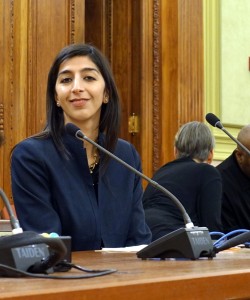
Good morning, Committee members. My name is Layla Moughari. I am a resident of Ward One and a member .of the Stop Street Harassment Board of Directors. Thank you for the opportunity to speak at this roundtable.
I’m here to request that you take action against street harassment.
Many people see street harassment as harmless, and a fact of life. But street harassment can be terrifying and inhibit mobility, and there’s always a possibility that street harassment can escalate into violence or sexual assault.
In the 10 years I’ve lived in DC, street harassment has been a regular feature in my life. There have been times I’ve experienced it daily.
In Columbia Heights, I’ve experienced several aggressive and upsetting interactions. On one occasion, two men shouted obscenities at me because I didn’t respond to their advances. Another time, someone grabbed me as he rode past me on his bike.
And in another situation I was alone, walking to the gym at 6 o’clock in the morning. It was pitch black out and no one was around. I heard someone hissing at me. I looked around and couldn’t see anyone. The hissing continued but closer this time. I realized that someone was following me, getting closer to me, but hiding from me. I was alone in the dark. When the hissing continued, I felt that I was in imminent danger and completely helpless. I started to run and scream down the street. A concerned neighbor asked if I was OK. I was still scared, but I felt better instantly.
I skipped the gym that morning, and never felt safe walking home again. In fact, the harassment I experienced in Columbia Heights contributed to my decision to move from the neighborhood in 2012 after living there five years.
Unfortunately, this experience is not unique to me as is evident by the others here today and the many people who submit their stories to the CASS and Stop Street Harassment blogs. A national study commissioned by SSH found that two-thirds of women and one-quarter of men had experienced gender-based harassment in public spaces.
While some research exists on street harassment, we lack concrete data for DC and are limited in what we know about the rates, causes and consequence of street harassment here in the District, as well as the best practices for combating it.
I request that the city council assist in collecting data so we can better understand the scope of the problem and where specifically it happens. Then, once we understand the issue more, I hope the city council can work with local organizations on non-criminalizing, community-based solutions such as public awareness campaigns.
I hope that one day street harassment will be viewed the same way workplace sexual harassment is largely seen now, recognized by our culture as disrespectful, inappropriate, and harmful. Workplace sexual harassment was also accepted as normal not long ago. But with research, policies, laws, enforcement of the rule of law, and culture change, workplace harassment is much less pervasive today.
#16Days of Activism: Making Businesses Safer (Day 11)
Nov. 25 – Dec. 10 are the 16 Days of Activism Against Gender-Based Violence. To commemorate the week, we are featuring 1 activism idea per day. This information is excerpted from my new book Stop Global Street Harassment: Growing Activism Around the World (Praeger 2015).
In the United States, a few advocacy groups have worked with businesses to make safer spaces for customers and community members. In 2011 in Arizona, the Southern Arizona Center Against Sexual Assault, for instance, launched Safe Streets AZ to address street harassment, particularly harassment targeted at LGBTQ youth. One component of the campaign is Safe Sites. Staff at restaurants, bookstores, and coffee shops take a 30-minute Safe Sites training, which then allows the establishment to be listed as a place where youth can seek safety if they are facing street harassment or feel unsafe. Nearly 30 businesses have gone through the training, and it is endorsed by the Pima County Small Business Commission, the Southern Arizona Chamber of Commerce Alliance, and the Pima County Public Libraries. Each site is listed on a Google map on the Safe Streets AZ website.
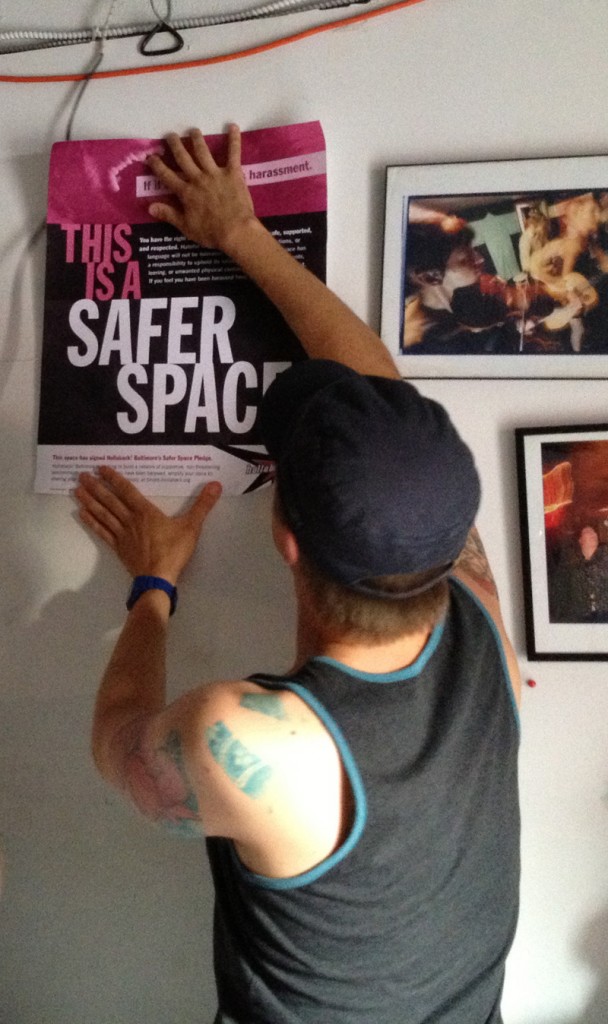 Inspired by the Good Night Out campaign in London, the members of Baltimore’s Hollaback! Bmore launched a Safer Spaces Campaign in 2013. They work directly with a business to ensure its current employee guide and/or security policies are comprehensive and sensitive to experiences of gender-based violence. Then Hollaback! Bmore provides a free training workshop on street harassment basics and crisis response that includes role-playing real-life situations. Once a majority of employees have gone through the training, they sign a pledge, hang an informational poster (provided) in plain view, and receive the Hollaback! Employer’s Guide to Ending Street Harassment. Hollaback! Bmore then supports and advertises these spaces on its website. So far, eight venues are completely trained, two are being scheduled, and 14 more have expressed interest.
Inspired by the Good Night Out campaign in London, the members of Baltimore’s Hollaback! Bmore launched a Safer Spaces Campaign in 2013. They work directly with a business to ensure its current employee guide and/or security policies are comprehensive and sensitive to experiences of gender-based violence. Then Hollaback! Bmore provides a free training workshop on street harassment basics and crisis response that includes role-playing real-life situations. Once a majority of employees have gone through the training, they sign a pledge, hang an informational poster (provided) in plain view, and receive the Hollaback! Employer’s Guide to Ending Street Harassment. Hollaback! Bmore then supports and advertises these spaces on its website. So far, eight venues are completely trained, two are being scheduled, and 14 more have expressed interest.
Help fund our work in 2016, donate to our end-of-year giving campaign!
